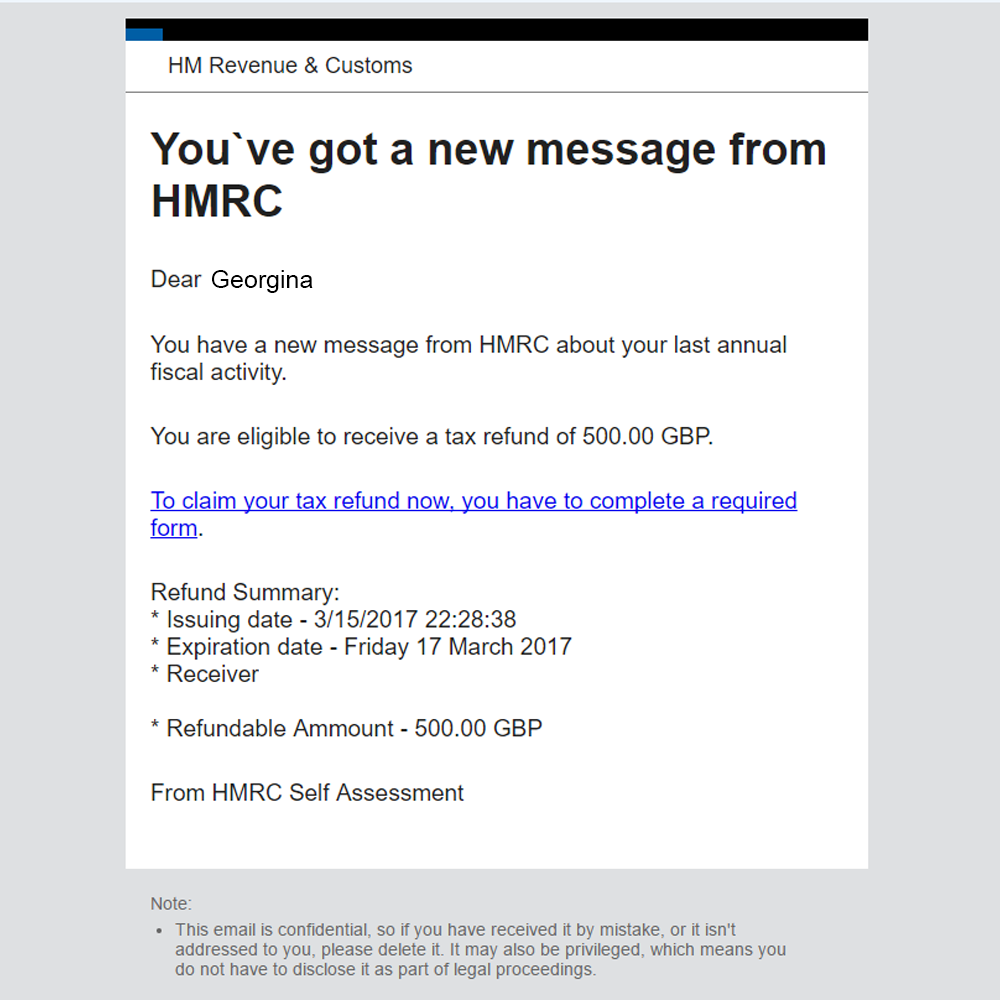7 Simple Tips On How To Spot Scam Emails
Does this email look familiar?
This is one of the many phishing emails that are sent out daily to thousands of victims all over the world.
When I saw this particular email, initially I thought;
Wow, I didn’t realise I was entitled to a tax rebate, this could come in really handy.
It was only when I started digging I realised that this was a spam email.
Although some phishing emails are quite clearly frauds, others can be a bit more deceiving.
What’s Your SEO Score?
So How Can You Tell The Difference?
Here are some things to look out for in a phishing email:
- Make Sure The Email Address Matches The Contact Name
This is where the alarm bells started ringing for me.
Although the email appeared to be from tax@hmrc.gov.uk, it wasn’t.
This HMRC email was just saved as its contact name and not the actual email address.
The email was actually from hbzjcnpdpq@his.org.uk, which is quite clearly is not from HMRC.
- Look Out For Spelling and Grammar Mistakes
Normally when a legitimate organisation sends out an email, it is proof read to ensure there are no mistakes.
If there are spelling or grammar mistakes, it probably didn’t come directly from the company.
- The Message Asks For Personal Information
Due to security reasons, most well-known organisations will never ask you for your personal information over an email.
Whether it is a password, your credit card number or just your general personal information, if you feel like something isn’t quite right don’t send your details.
- You Didn’t Do What It’s Saying
Another phishing email that I have received was about a parking ticket.
The email said that if I didn’t pay the price for the ticket within 24 hours it will double in price.
But I didn’t get a parking ticket and I wasn’t even in the area you’re suggesting?
It’s the same as if you receive an email saying that you have won a contest that you have never entered.
It is most definitely a scam email.
- The Email Asks You To Take Immediate Action
If there is a link in a suspicious email that you need to click to either clear your name or confirm your account details, DO NOT click it!
Even if you click through to a link without adding any personal information, the link could potentially take you through to a website that has viruses and could potentially affect your device.
The majority of scam emails urge you to take immediate action, but if it was that immediate in most scenarios it won’t be dealt with over an email.
- The Offer Seems Too Good To Be True
If it seems too good to be true, it most probably is.
When receiving an email from an unknown sender who promises you the world within just a short email, don’t get your hopes up.
The message is probably a scam.
- Something Doesn’t Look Right
Trust your instinct!
If an email doesn’t look official, it’s most probably not.
Suspicious behaviour happens for a reason and being aware of it is crucial.
Just like when you go to the airport and go through security.
Random searches are taken out on people who are acting suspicious as its better to be safe than sorry.

Georgina Coughlan
Marketing Executive




Leave a Reply
Want to join the discussion?Feel free to contribute!